Clarisa Diaz
Selected Works
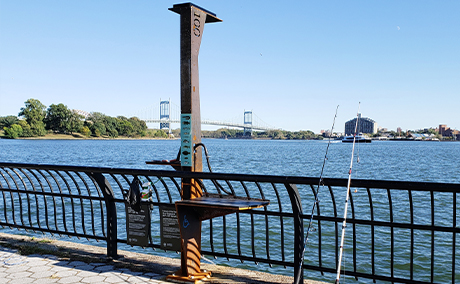
El Barrio Bait Station
Illustrated Fish of the East River, the educational component of the bait station. The bait station is solar-powered and ADA accessible for anglers along the East River Esplanade in Manhattan. Winner of the 2020 MASterwork Award from the Municipal Art Society of New York. The project won Best New Infrastructure for distinctive design in public service projects.
- Clients: Friends of the East River Esplanade, JACOBSCHANG Architecture
- Role: Illustrator, Coordinated Vendor for Fabrication

ChildFund International
Design direction and production of ChildFund's 2018 Impact Report. Available on ChildFund International.
- Client: ChildFund International
- Role: Photo Editor, Designer of data visualizations, organization, and layout of the report.
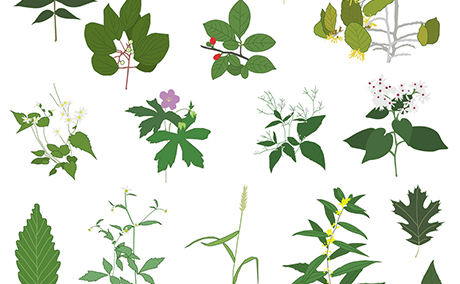
Urban Woodlands
Reported story with the Pulitzer Center on Crisis Reporting and Climate Central about woodland restoration and urban forestry in NYC. Featured on Science Friday and the Pulitzer Center.
- Clients: Pulitzer Center, Climate Central, Science Friday
- Role: Reporter, Audio Producer, Designer, Partnership Coordinator

Snowmelt
Initiated and developed project making snowfall observations with the Lamont-Doherty Earth Observatory and WNYC. Reported story on global warming, snowflake formations, and a faster melting snowpack in the NY region. Designed citizen science toolkit and led teacher trainings with NYC public schools. Featured on Science Friday and Columbia University's Earth Institute.
- Clients: WNYC, Lamont-Doherty Earth Observatory
- Role: Reporter, Writer, Designer, Project Coordinator
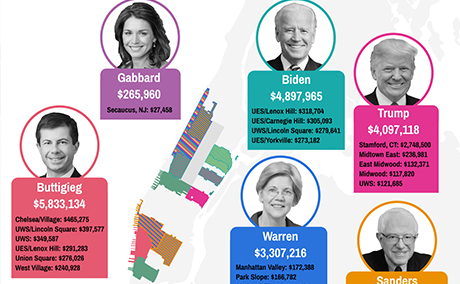
Visual Facts
A selection of data visualizations created for Gothamist, WNYC, The Greene Space, and WNYC Studios.
- Client: New York Public Radio
- Role: Author, Designer
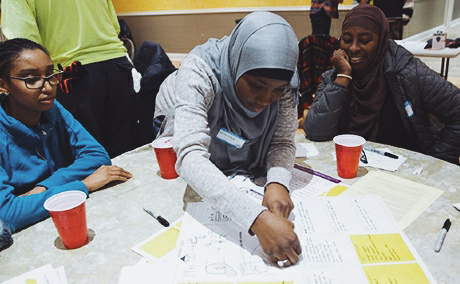
Five Years After Sandy
Reported story on the systemic design of storm warnings for the five-year anniversary of Hurricane Sandy in NYC. Coordinated co-design workshop with residents, community organizations on Staten Island, the International Research Institute for Climate and Society, IDEO, Parsons School of Design, and the NYC Office of Emergency Management to network and brainstorm ways to work together in preparation for the next hurricane. Part of Peril and Promise: The Challenge of Climate Change, a series by PBS.
- Clients: WNYC, PBS
- Role: Reporter, Writer, Designer, Project Coordinator

NYC's Peaker Power Plants
Reported story on the state of NYC's peaker power plants, and community-led efforts to transition to renewable energy + storage. Won the 2020 Front Page Award from the Newswomen's Club of New York for local feature reporting. Published on Gothamist.
- Clients: Gothamist, Climate Central
- Role: Reporter, Writer, Designer
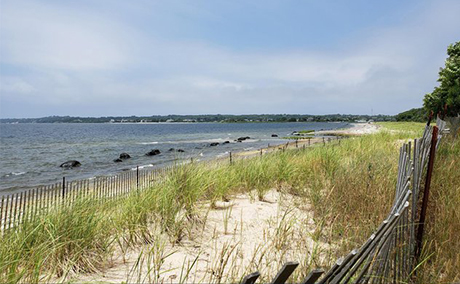
Shinnecock Shoreline Restoration
Reported story on the Shinnecock Nation's efforts to reduce the impacts of flooding by restoring their reservation's shoreline. Part of Covering Climate Now an initiative of the Columbia Journalism Review. Published on Gothamist.
- Clients: Gothamist, Columbia Journalism Review
- Role: Reporter, Writer, Audio Producer, Designer

Male Plumage 1968: Revisted
A web interactive animating the 1968 Newsweek cover into a fun experience where readers can mix and match outfits and share them via social media. Published in Newsweek & The Daily Beast.
- Client: Newsweek & The Daily Beast
- Role: Concept, Design, Front-End Development
- Collaborator: Michael Keller

Nomad Script
A typographic and interactive web experience based on the paths of the nomad. Each glyph is designed using the cardinal directions as a grid for combining letters as lined paths in endless, reconfigurable and surprise patterns. Presented with the question: ____is where I want to be, visitors can type their answers to add to the nomadic code. Some answers have been Florida, Nowhere, Everywhere, Love, The Right Place, Alice in Wonderland, Home, and Ashley.
- Exhibition: Cologne, Germany (and everywhere) with Pascal Glissmann
- Role: Concept, Design, Front & Back-End Development
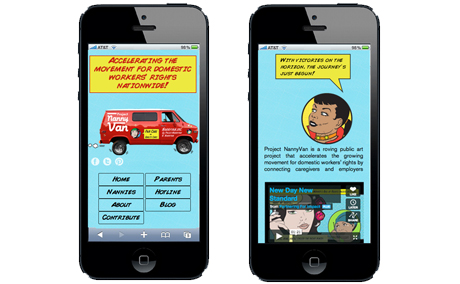
The Mobile Nanny Van
Designed mobile site for The Nanny Van Project, a public art project advocating domestic workers' rights. 'Equal parts advice and humor - think NPR's "Car Talk" for nannies-users can call in with any kind of phone and at any hour to listen to different humorous episodes about topics such as overtime wages, paying your taxes and more.'
- Client: Marisa Jahn, REV Studio
- Role: Web and Mobile Design
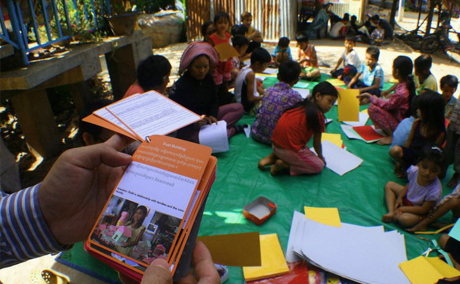
Community Mapping Toolkit
Co-authored and designed with a Cambodian NGO mapping households in areas at risk of eviction. Documented the NGO's local methods into one compact resource for scaling up efforts. The resource is a flexible toolkit allowing for specific activities and tasks according to community context. Community mapping leads to the creation of a drawn map stamped by local authorities as a form of land ownership. The toolkit is currently utilized by the organization’s new staff and university students interested in community-based design.
- Client: Sahmakum Teang Tnaut, STT (Khmer for Palm Leaf)
- Role: Concept, Research, Design
- Collaborator: Meas Kimseng
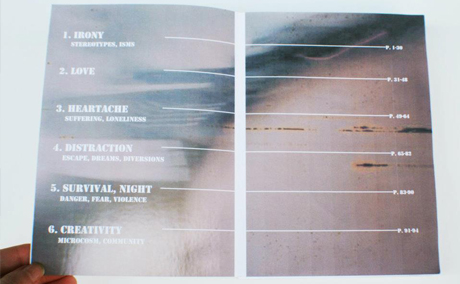
Concrete Justice: Street Poetry
Project managed and designed the layout for a book by Theatre of the Oppressed NYC. Writing and art workshops were facilitated with the theatre members, a collective of actors and poets, to develop the content. The book consists of biographical reflections of the homeless experience in NYC.
- Client: Theatre of the Oppressed NYC
- Role: Art Direction, Design

Force-Feeding In Guantanamo
A news web interactive illustrating the process of force-feeding in Guantanamo during the 2013 prisoner hunger strike. Visualized with journalists at The Daily Beast. Published by The Daily Beast.
- Client: The Daily Beast
- Role: Concept, Illustration, Design, Front-End Development
- Collaborators: Michael Keller, Abby Haglage
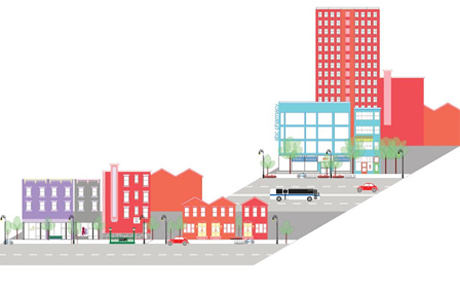
NYC Active Design Toolkit
Consultant for the NYC Dept. of Health & the Built Environment with Velocity. Designed the graphics for a kit of building blocks to run activities for resident input in urban planning. The graphics are designed to be flexible, laminated for erasing, some only with outlines for residents to fill in their drawings and notes.
- Client: NYC Dept. of Health & the Built Environment, Velocity
- Role: Art Direction, Design
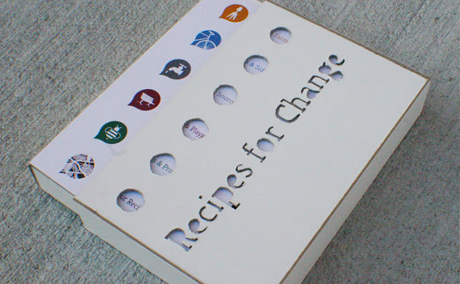
Recipes for Change Toolkit
Co-authored and designed a project with a crowd-sourced environmental NGO to tell the stories of project leaders making gardens, street programs, park and water cleanups around NYC. The kit serves as a reference guide for start-up projects making an environmental impact on the local level. Recipe cards include methods for community organizing, budgeting, and fundraising.
- Client: ioby, In Our Backyards
- Role: Concept, Research, Design
- Collaborator: Erin Barnes
- Exhibition: Amplifying Creative Communities 2011, Parsons DESIS Lab
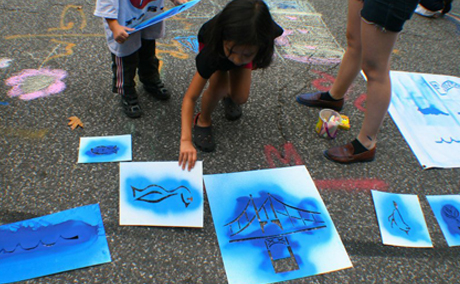
Shore Walk
Public art project in which visitors may design their own stencils, reflecting their thoughts on the neighborhood and adding them to a ground mural using spray chalk. Featured at the Astoria Shore Festival and at SUPERFRONT on Houston Street in NYC.
- Role: Artist, Facilitator
- Exhibition: Astoria Shore Festival 2012, SUPERFRONT 2013

Palestinian Refugee Housing
Architecture thesis project in 2006 with the United Nations Relief and Works Agency for Palestinian Refugees. Developed concepts for co-designing housing with refugees in Aqabat Jaber, a camp near Jericho and the Dead Sea. Visited the camp in the West Bank and presented prototypes at the UN office in Amman, Jordan. As of 2013, UNRWA has initiated a new housing program for refugees in which this project was used according to their protocol.
- Role: Concept, Design, Technical Drawing, Fabrication
- Client: United Nations Relief and Works Agency, UNWRA
- Collaborators: Steve Bagwell, Philippe Barriere
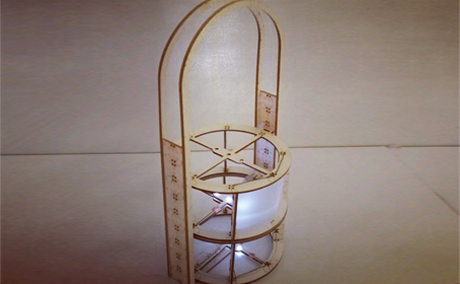
Modular Lantern
Lamp utilizing computational craft methods to create light when modules are stacked. Light modules may either be set in one place or made portable. Combined traditional craft with new methods of soft circuitry.
- Experiments: Computational Craft
- Role: Concept, Design, Technical Drawing, Fabrication
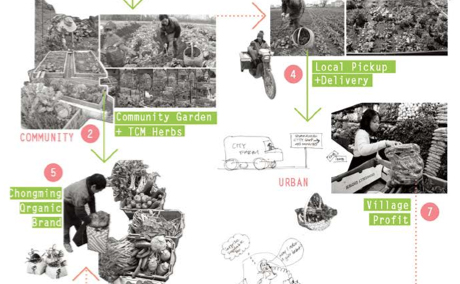
Design Harvests: IDEO Shanghai Collaboration
Conducted UI/UX research for targeting organic food and wellness audiences in Shanghai. Research included the use of ethnographic observation, interviews, the creation of personas, finding key targets and building wireframes for prototypes. Worked with senior researchers at the IDEO office, utilizing their methodologies and toolkits.
- Client: TEKTAO Urban Design Consulting
- Role: Studio TAO Project Manager, UI/UX Researcher with IDEO team
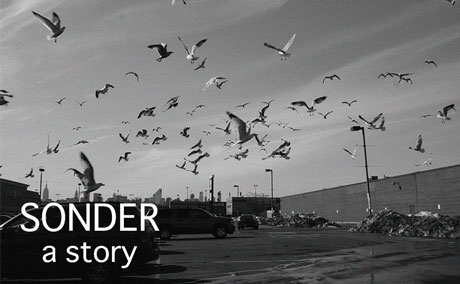
Sonder, A Story
A transmedia narrative about identifying with people on our periphery, this project addresses how human connections can be made through everyday experiences. We encounter people randomly or sometimes have contact with someone on a regular basis but fail to know who they are. The term sonder, from the Dictionary of Obscure Sorrows, encompasses the realization that every passerby has a life as vivid and complex as your own. This story reveals the narratives of liminal figures among four people in a neighborhood in Queens, NY. These people are an art student (the author), a taxi driver from Bangladesh, a laundry lady from Mexico, and a Chinese couple running a 99cent store. All figures unknowingly lead interconnected lives until their conversations lead them to discover connections in the same community. The formats of the story are a written web documentary, print artifacts including tickets and receipts that are the reminisce of brief encounters, and physical mechanisms reflective of the services that hold the print artifacts. While technology brings new possibilities for connections, or increasing exclusivity, this project reminds us that we are responsible for what becomes hidden. This project asks a critical design question of the tangibility of technology in the physical environment in which we live and interact with one another.
Read the story here.- MFA Thesis Parsons The New School for Design: Art, Media, and Communication
- Role: Author, Designer, Developer, Fabricator

Animal Puppet Chat
A surreal online chat application that weaves custom avatars in and out of environments based on the mood of words typed. Designed with NYPL Labs and illustrator Ellen Weinstein for Bit by Bit: Experiments in Digital Storytelling challenge hosted by the Brown Institute for Media Innovation. Viewable here.
- Role: Designer between artist and developers. Translated print illustrations into digital components used to build puppets
- Collaborators: NYPL Labs, Ellen Weinstein
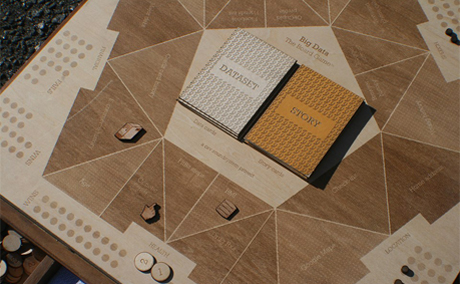
Big Data: The Board Game
A board game made with friends, where each player is both a company and person with data. Players buy datasets about other players and manipulate the data to tell stories revealing personal information. The game becomes increasingly exploitative and uncontrollable. Shown at the Rubin Museum of Art for Data & Society.
- Role: Wood fabrication, laser cutting, game piece design
- Collaborators: Michael Keller, David Riordan, Albert Sun, Colleen McEnaney, Ingrid Burrington

Queens Museum: Corona Plaza Publication
A special publication of the Queens Museum that reflects on its 10-year involvement programming and re-designing Corona Plaza, a public plaza in Corona, Queens. The publication reflects the museum's desire to share their public programming and community engagement practices with other plaza programmers and managers throughout New York City, any cultural organization with an interest in developing programs for public space, and anyone interested in the conversation about public space programming in the context of neighborhoods with complex cultural ecologies. Available at the Queens Museum.
- Role: Design Direction, Designer
- Collaborators: Valeria & Mariana Mogilevich with Queens Museum collaborators Prerana Reddy, Jose Serrano-McClain, and Alexandra Garcia
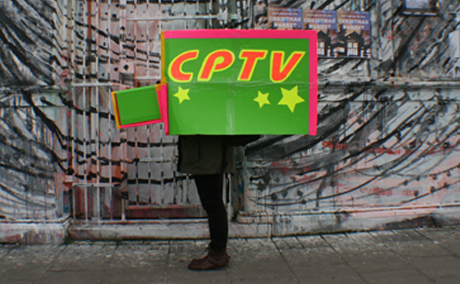
Civic Pedagogy Television (CPTV)
CPTV is a fictitious and non-fictitious TV station streamed on the web for residents to voice their thoughts on development in their neighborhoods. Created as the community engagement portion of academic research at Oxford Brookes University, funded in part by Santander CPTV videos viewable here.
- Role: Design Direction, Designer
- Collaborator: Dr. Harriet Harriss
Clarisa Diaz is an interdisciplinary designer, illustrator, and writer based in Maine and New York. In 2006, she began her career as a Fulbright scholar in Architecture with affordable housing residents in Chile. Her practice has since evolved into designing tools for services with various organizations producing books, toolkits, web features and other interactive experiences.
In 2010, Clarisa founded Places for All, a platform of her work addressing community-based development. She has taught design courses at Pannasastra and Limkokwing universities in Cambodia, Parsons The New School for Design, NYU's Integrated Digital Media and Environmental Studies programs, the Columbia University Graduate School of Journalism and the Columbia Climate School. She has served as a design advisor and critic at Oxford Brookes University, the Center for Collaborative Arts and Media at Yale, and the University of New Mexico.
Clarisa has exhibited and presented her work with the North American and Chilean Institute of Culture, Shanghai Biennale, Queens Museum, and SUPERFRONT. Her writing can be found in the NY Times acclaimed book Learning from Hangzhou, the Parsons Journal of Design Strategies, the Pulitzer Center on Crisis Reporting, PBS, Science Friday, WNYC, Gothamist, and Quartz among others.
Her awards include a Front Page Award for local feature reporting in NYC, a national Edward R. Murrow Award for Excellence in Innovation with colleagues at WNYC, and writing awards in the News and Technical categories from the North American Agricultural Journalists. She has also won fellowships and grants from various institutions including the Woods Hole Oceanographic Institution and the Brown Institute for Media Innovation.
Clarisa received a Master of Fine Arts in Design and Technology from Parsons The New School for Design. She holds a professional degree in Architecture from the University of Kansas.
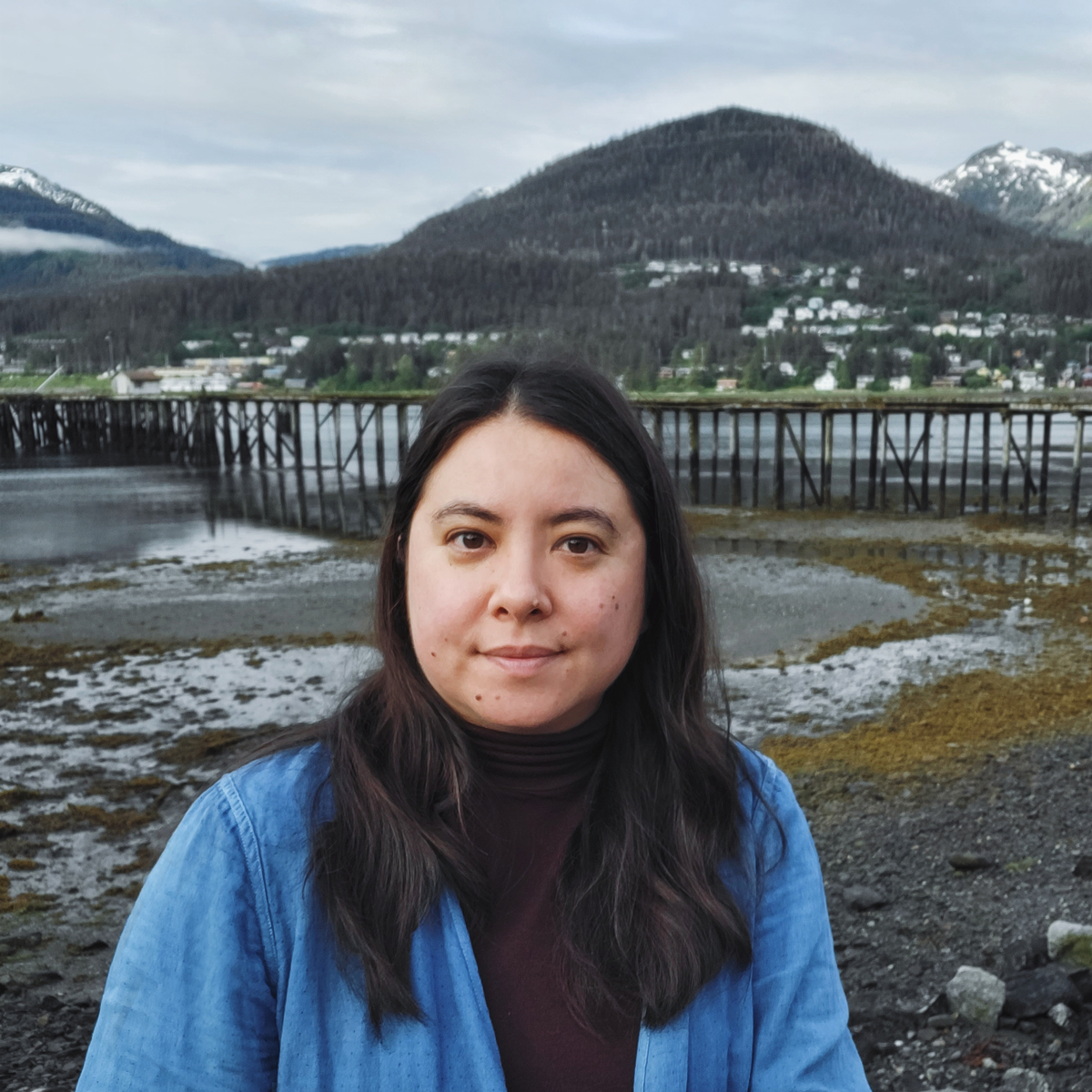
- Email: clarisadiaz@gmail.com
- Facebook: Places for All
- Twitter: @Clarii_D
- LinkedIn: Profile
- GitHub: ClarisaD